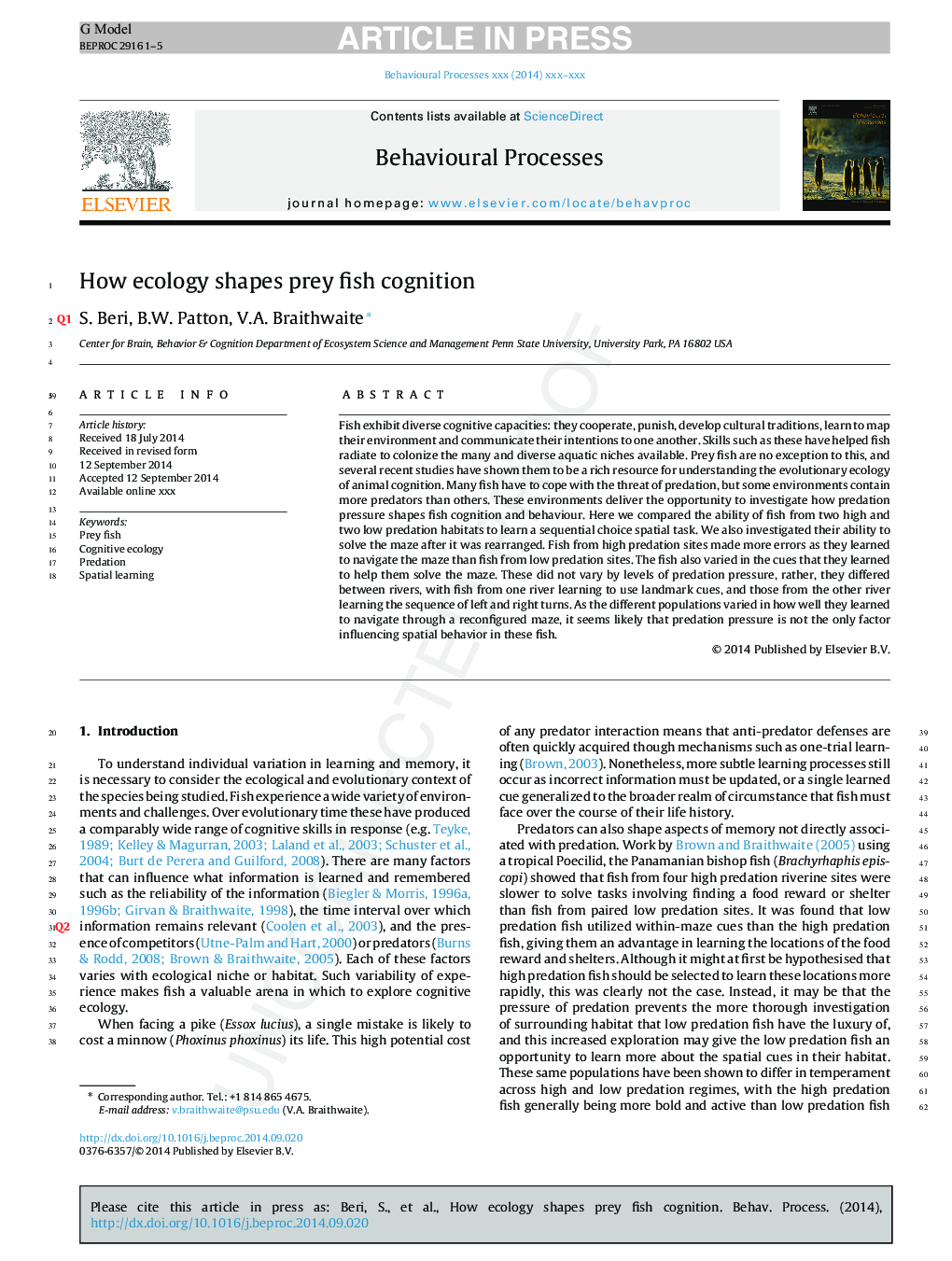| Article ID | Journal | Published Year | Pages | File Type |
|---|---|---|---|---|
| 10971222 | Behavioural Processes | 2014 | 5 Pages |
Abstract
Fish exhibit diverse cognitive capacities: they cooperate, punish, develop cultural traditions, learn to map their environment and communicate their intentions to one another. Skills such as these have helped fish radiate to colonize the many and diverse aquatic niches available. Prey fish are no exception to this, and several recent studies have shown them to be a rich resource for understanding the evolutionary ecology of animal cognition. Many fish have to cope with the threat of predation, but some environments contain more predators than others. These environments deliver the opportunity to investigate how predation pressure shapes fish cognition and behaviour. Here we compared fish from two high and two low predation habitats in their ability to learn a sequential choice spatial task. We also investigated their ability to solve the maze after it was rearranged. Fish from high predation sites made more errors as they learned to navigate the maze than fish from low predation sites. The fish also varied in the cues that they learned to help them solve the task. These did not vary by levels of predation pressure, rather, they differed between rivers, with fish from one river learning to use landmark cues, and those from the other river learning the sequence of left and right turns. As the different populations varied in how well they learned to navigate through a reconfigured maze, it seems likely that predation pressure is not the only factor influencing spatial behavior in these fish.
Related Topics
Life Sciences
Agricultural and Biological Sciences
Animal Science and Zoology
Authors
S. Beri, B.W. Patton, V.A. Braithwaite,
